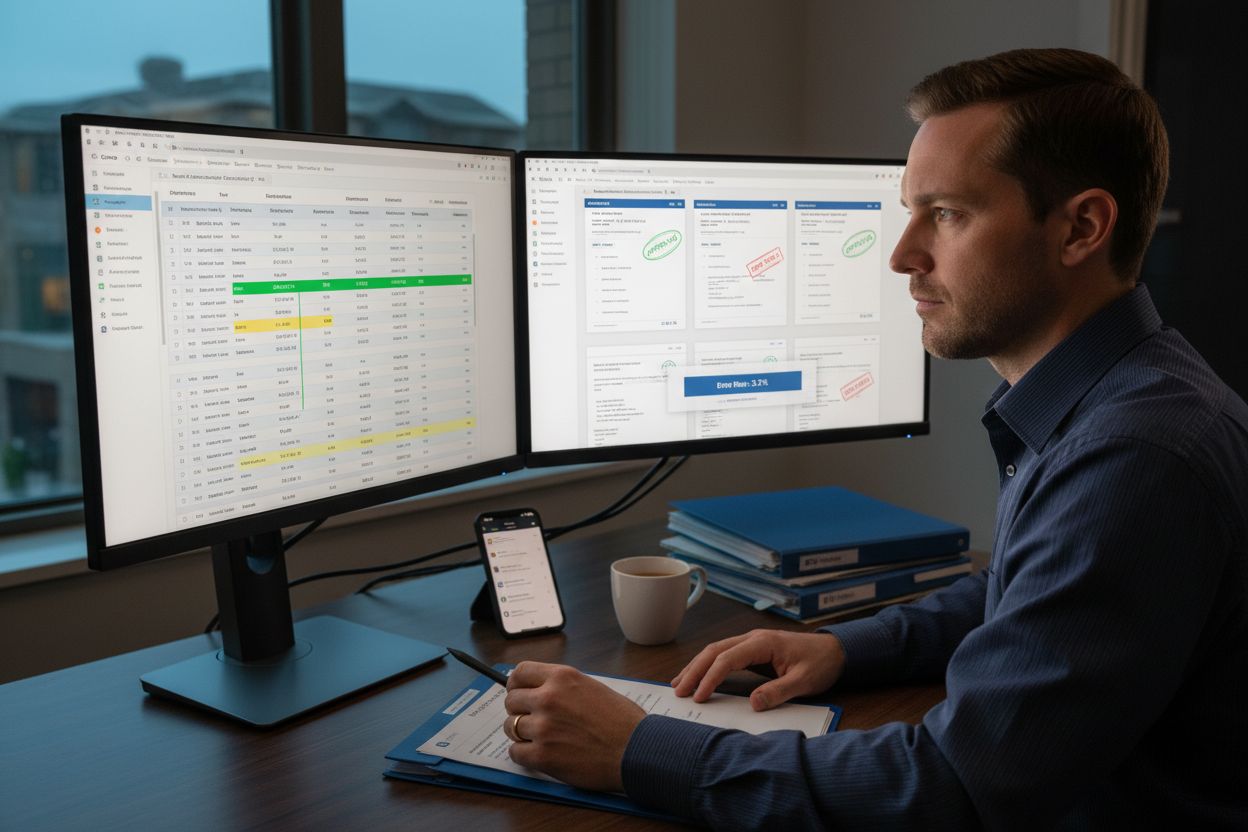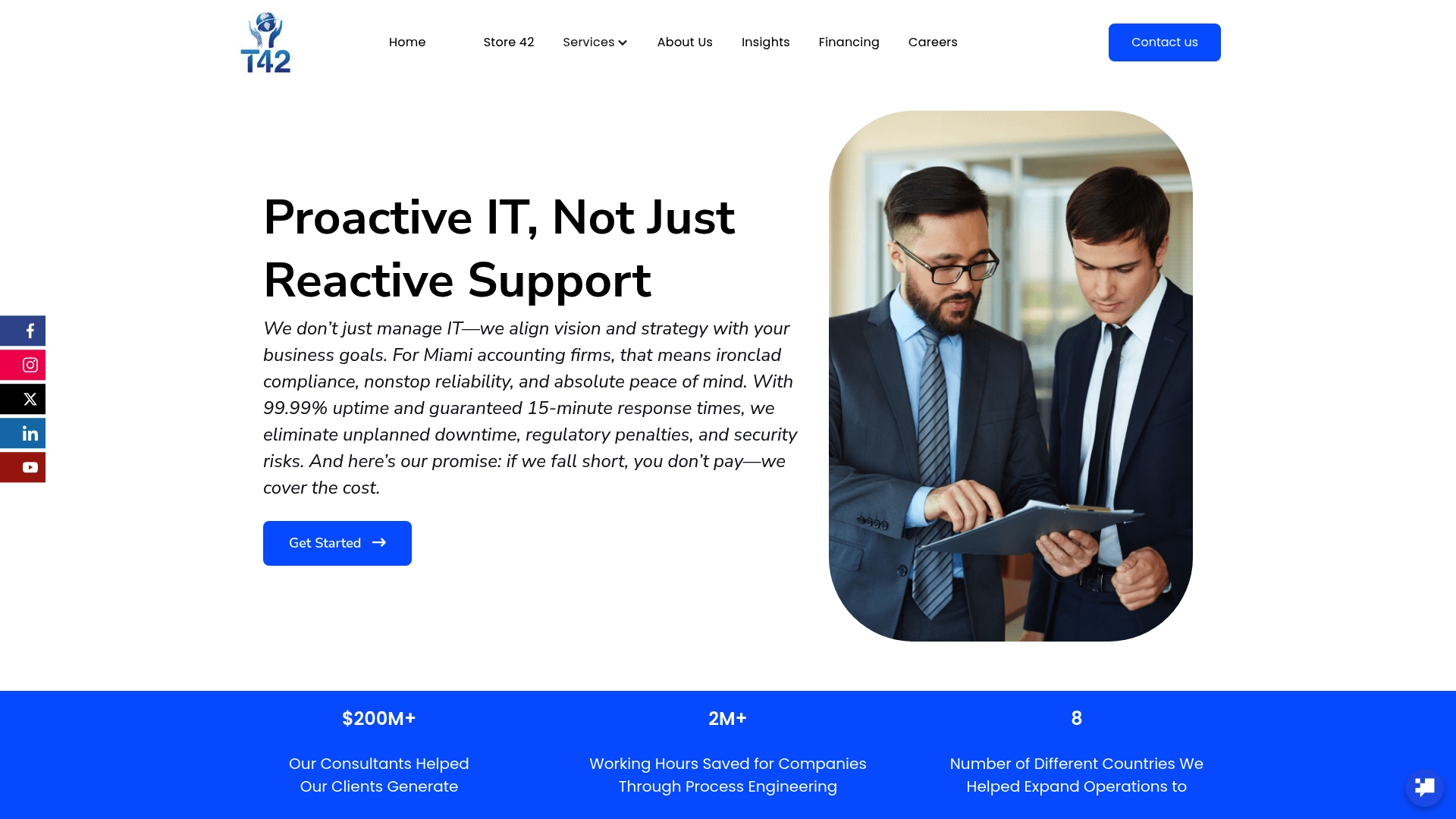
Did you know that up to 60 percent of accounting team time can be reclaimed with the right workflow automation tools? Manual data entry and repetitive tasks drain valuable hours and leave room for costly mistakes. Accounting professionals now face growing pressure to improve accuracy and accelerate service. Understanding how automation reshapes accounting can reveal straightforward ways to cut errors, work smarter, and free up time for higher level financial strategy.
| Point | Details |
|---|---|
| Workflow Automation Enhances Efficiency | Automating repetitive tasks allows accountants to focus on strategic analysis and reduces time spent on manual processes. |
| Robust Tools Are Essential | Utilization of dedicated automation tools like WorkflowMax, FloQast, and BlackLine streamlines financial operations and improves integration with existing software. |
| Security and Compliance Are Critical | Implementing strong security measures and ensuring regulatory compliance is vital for safeguarding sensitive financial data during automation. |
| Avoid Common Pitfalls | Successful automation requires attention to process design, data quality, and comprehensive training to prevent ineffective implementation. |
Workflow automation for accountants is about transforming repetitive, manual tasks into streamlined, digital processes that save time and reduce human error. Robotic process automation (RPA) represents a game-changing approach where specialized software ‘bots’ handle routine accounting functions without constant human intervention.
According to research from financial technology surveys, workflow automation specifically means reducing administrative burdens like task scheduling, document collection, and data entry. The goal isn’t replacing accountants, but empowering them to focus on high-value strategic work. Imagine automatically routing expense reports, scheduling client meetings, or generating standardized financial documents - tasks that traditionally consume hours of manual effort.
For accounting professionals, workflow automation delivers tangible benefits:
As technology continues evolving, workflow automation article will become less of an option and more of a necessity for competitive accounting practices seeking efficiency and precision.
Workflow automation in accounting spans multiple critical areas, transforming how financial professionals manage their daily operations. According to research from accounting technology experts, workflow automation types include key functional domains like invoicing, billing, expense management, financial reporting, and payroll processing.
According to sources specializing in accounting technology, specific tools have emerged to streamline these processes. Platforms like WorkflowMax integrate seamlessly with accounting software such as QuickBooks and Xero, while specialized solutions like FloQast and BlackLine focus on critical tasks like reconciliation and financial close management. These tools offer powerful features such as automated invoice processing, time tracking, task assignment, and comprehensive reporting capabilities.
Here’s a comparison of leading workflow automation tools for accountants:
| Tool | Key Focus Areas | Integration Capabilities |
|---|---|---|
| WorkflowMax | Invoicing Billing |
QuickBooks Xero |
| FloQast | Reconciliation Financial close |
Cloud accounting apps |
| BlackLine | Financial close Reporting |
ERP systems Accounting software |
For accounting professionals, workflow automation tools deliver game-changing benefits:

As accounting technology continues evolving, business process automation guide will become increasingly sophisticated, offering accountants more powerful ways to streamline complex financial workflows and focus on strategic insights.
Workflow automation fundamentally transforms accounting processes by dramatically reducing manual workload and increasing operational efficiency. According to cutting-edge research, automation technologies can streamline critical financial tasks like invoice processing, expense reporting, bank reconciliation, and month-end closing operations, handling high-volume rule-based activities with unprecedented speed and accuracy.
Real-world case studies highlight the transformative power of workflow automation. One comprehensive study revealed that implementing automated processes can cut invoice processing time by 65%, substantially reduce manual error rates, and remarkably reallocate up to 60% of accounting team time toward strategic, value-added activities. The financial impact is substantial, with organizations potentially saving approximately $180,000 annually through intelligent workflow optimization.

Key improvements enabled by workflow automation include:
As accounting technology continues evolving, business process mapping guide will become an essential resource for professionals seeking to leverage these powerful automation strategies and transform their operational capabilities.
Workflow automation in accounting introduces complex security and compliance challenges that demand rigorous architectural planning. Regulatory compliance becomes paramount, requiring sophisticated systems that protect sensitive financial data while meeting stringent legal standards like Sarbanes-Oxley and industry-specific financial regulations.
The implementation of workflow automation necessitates robust security controls. These include role-based access management, end-to-end encryption, comprehensive audit trails, and sophisticated internal transaction monitoring mechanisms. By designing systems with multilayered security protocols, accounting firms can prevent unauthorized access, reduce fraud risks, and maintain transparent, traceable financial processes.
Key security and compliance considerations include:
As technological landscapes evolve, security architecture guide will become increasingly critical for accounting professionals seeking to balance technological innovation with stringent security requirements.
Workflow automation in accounting is fraught with potential pitfalls that can derail even the most well-intentioned digital transformation efforts. According to comprehensive research, automation failures often stem from fundamental strategic mistakes that organizations consistently repeat when implementing new technological solutions.
Research highlights several critical errors that accounting professionals must carefully navigate. These include automating inefficient processes without first redesigning them, neglecting data quality and governance, overlooking scalability requirements, and failing to incorporate cross-functional input. Particularly dangerous are mistakes related to tax and legal invoice compliance, inadequate workflow design, insufficient user training, and weak security protocols that can expose sensitive financial information.
Key mistakes to watch out for include:
As technology continues to evolve, business process mapping guide will become an essential resource for accounting professionals seeking to navigate the complex landscape of workflow automation with strategic precision and minimal risk.
The challenge of transforming inefficient accounting workflows into seamless, automated processes is real. You want to reduce manual errors, speed up financial reporting, and maintain absolute compliance and security while freeing your team to focus on strategic work. The article “Why Automate Workflows: The Essential Guide” highlights how workflow automation can slash operational costs and boost accuracy—but only when backed by the right IT strategy and support.

Don’t let technology complexities or security risks hold your firm back. At Transform42, we align your vision and business goals with ironclad IT solutions tailored for Miami accounting practices. Experience 99.99% uptime, guaranteed 15-minute response times, and a promise to cover costs if we fall short. Navigate the automation journey confidently with experts who understand regulatory demands and workflow optimization. Start today by visiting our homepage and learn how to turn automation from a risk into your greatest opportunity.
Workflow automation for accountants refers to the process of converting repetitive manual tasks into streamlined digital workflows, enhancing efficiency and accuracy. Technologies like robotic process automation (RPA) automate routine functions, allowing accountants to focus on higher-value tasks.
The primary benefits of automating workflows in accounting include reduced administrative time, consistent process execution, lower risk of human error, enhanced speed of client service, and improved compliance tracking.
Workflow automation improves accounting efficiency by streamlining tasks such as invoice processing, expense reporting, and month-end closing, leading to faster transaction processing, reduced human error, and more time for strategic financial analysis.
Common mistakes to avoid include automating inefficient processes without redesigning them, neglecting data quality and governance, failing to ensure scalability, and not providing adequate user training or security protocols.